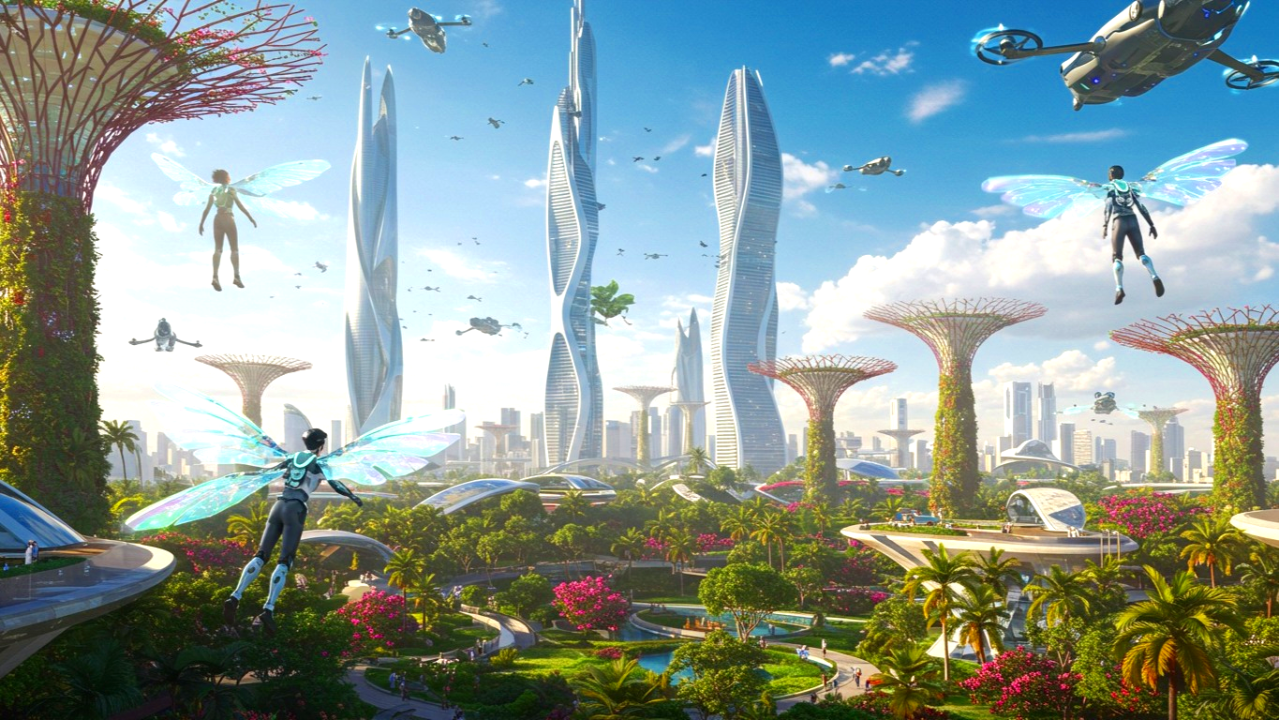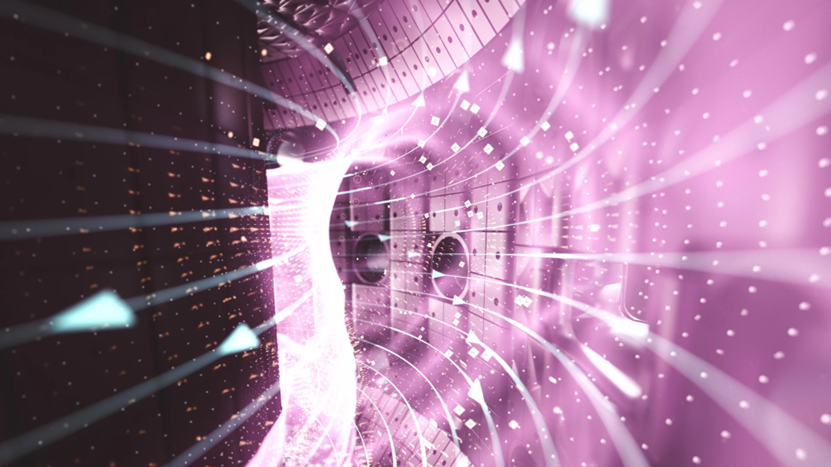Table of Contents Hide
The AIs You Didn’t Know Were Turbocharging Human Progress (It’s Not All Scary!)
 11 MIN. READING
11 MIN. READING
So you’ve probably heard a lot about AI lately—and not all of it good. Super-intelligent machines taking over the world, mass job displacement, scary face-swapping videos, yada yada—and it’s probably mostly true.
Let’s be honest—most of what we hear about AI these days feels like it’s pulled straight from a dystopian Netflix series. Killer robots, job-stealing algorithms, deep fakes that could fool your own mother. This concerns me as well, and yes, these concerns deserve our attention!!! But there’s another story unfolding—one that rarely makes headlines but is fundamentally reshaping our world for the better.
8 Groundbreaking leaps into the future, through some of the most mind-bending developments happening right now that maybe you didn’t even know that AI is part of these achievements. Let’s dive in
1. The Medicine Revolution: AI as Our New Microscope
In 2020, MIT researchers achieved what once seemed impossible: Halicin, a novel antibiotic capable of eliminating drug-resistant bacteria. The AI system evaluated more chemical compounds in days than human scientists could assess in multiple lifetimes, opening new frontiers in our fight against disease.

By 2023, MIT scientists had refined their AI approach even further, developing a revolutionary deep learning system capable of generating entirely new molecules designed specifically to combat antibiotic-resistant infections. This advanced AI “dreams up” entirely new compounds, creating molecular structures that have never existed before. The system specifically targets bacterial proteins that previous antibiotics couldn’t touch, representing a fundamental advance in our arsenal against superbugs.
The implications are staggering: the AI identified 9 entirely new antibiotics with novel mechanisms of action, including two that demonstrated exceptional potency against bacteria that had become resistant to nearly all other antibiotics. Professor James Collins, the Termeer Professor of Medical Engineering and Science at MIT, aptly summarized the magnitude of this achievement:
“This work represents a dramatic advance in our ability to discover new antibiotics.”
Most remarkably, the AI accomplished this by learning to create molecules that bypass the standard resistance mechanisms bacteria have developed over decades of evolution.
2. The Protein Puzzle: From 50 Years to 50 Hours
AlphaFold‘s solution to the protein folding problem stands as one of the most significant scientific breakthroughs of our time. For over 50 years, understanding how proteins fold into their final shapes remained one of biology’s grand challenges. The implications of this mystery extended from Alzheimer’s research to cancer treatment. AlphaFold didn’t just solve this problem – it revolutionized our ability to predict protein structures with near-atomic precision in hours rather than decades.
In just three years since its release, AlphaFold has had a profound impact on the field of biology. It has been used to solve the structures of hundreds of proteins, including many that were previously inaccessible to experimental methods. AlphaFold has also been used to develop new drugs and vaccines, including a vaccine for the COVID-19 virus.
3. Vaccines at Warp Speed (And Its Not Just About COVID)
When COVID-19 hit, we witnessed something unprecedented in human history. While the world was locking down, AI systems were spinning up, analyzing decades of medical research in hours instead of years. What typically takes 10 years to develop, we did in less than one. And AI? It was the secret weapon in this race against time.
Pfizer’s AI system analyzed tens of millions of data points from their vaccine trials in just 22 hours!! That’s work that normally takes a month! Imagine being in that room when the results came in, knowing that every hour saved meant more lives protected.
But here’s where it gets even wilder: There’s this AI called LinearDesign that did something absolutely incredible. It didn’t just help make vaccines – it made them 128 times more effective. That’s not a typo. We’re talking about an AI that literally redesigned mRNA sequences to make them more stable and powerful than anything we could come up with on our own.
These same AI systems are already preparing for the next pandemic. They’re analyzing potential threats, designing prototype vaccines, and creating blueprints for rapid response – all before we even know we need them.
4. AI Dreams in Molecules
Imagine telling a computer, “I need a material that’s stronger than steel but lighter than plastic,” and having it design something that fits those exact specifications.
In November 2023, Nature Materials published a paper on a remarkable AI system called GNoME (courtesy of Google DeepResearch). GNoME has been sifting through chemical possibilities in ways even the best human minds simply can’t match for speed or breadth.
GNoME managed to identify 2.2 million potentially useful new materials in just a few hours. If each material represented a single research paper, that’s about 800 years’ worth of discoveries compressed into one afternoon. Scientists around the world have already confirmed 736 of these brand-new materials actually exist in labs.

Among GNoME discoveries are 380,000 stable materials with the potential to transform our world: New solar panel substrates that could slash the cost of renewable energy, advanced battery materials (528 and counting) for longer-lasting electric vehicles, and carbon capture compounds to help fight climate change.
And it doesn’t stop there—these breakthroughs aren’t locked in some digital vault. They’re currently being synthesized at a place called A-Lab, an AI-guided, robot-run lab that’s whipping up new chemicals like a gourmet chef. In just 17 days, A-Lab successfully created 41 previously unknown substances. Not decades—days.
The implications are monumental. Every new molecule could be the key to solving a big puzzle, whether it’s more efficient energy storage or a new pharmaceutical that tackles a rare disease. AI, in this sense, is like a cosmic microscope, allowing us to peek into realms we didn’t even know existed.
5. When AI Tackled Our Growing Hunger
The challenge of feeding a rapidly expanding global population—approaching 8 billion and projected to reach nearly 10 billion by 2050—places immense pressure on the agricultural sector. Farmland does not spontaneously increase in proportion to population growth, and the agriculture industry must achieve more with fewer resources.
AI-powered platforms such as CropSight and FarmBot X provide a glimpse of how advanced computing is transforming the farm:
- Early Detection of Pests and Disease – By applying image recognition algorithms to drones and ground-based sensors, these AI-driven systems can identify diseases or insect infestations before they cause large-scale crop loss. Farmers then take swift, targeted action to protect yields.
- Precision Irrigation – Billions of gallons of water can be saved annually by tailoring irrigation to the actual needs of individual plants. Instead of indiscriminately flooding fields, micro-irrigation systems measure soil moisture, weather forecasts, and plant health indicators to dispense the appropriate amount of water.
- Optimized Planting and Harvesting – “Harvest AIs” analyze soil data, historical weather patterns, and various environmental metrics to determine the best time for sowing, fertilizing, and harvesting. Some regions have reported 40% increases in yield after adopting these AI-based recommendations.
Rather than removing human expertise from agriculture, these systems augment it. Farmers interpret, evaluate, and implement the insights provided by AI, resulting in more sustainable practices and higher yield.
6. The Clean Energy Breakthrough Nobodys Talking About
Here’s something that should be making headlines but somehow isn’t:
In March 2023, researchers from the US Department of Energy (DoE) and the National Institute for Fusion Science (NIFS) in Japan unveiled a cutting-edge fusion reactor that applies AI to the daunting task of controlling superheated plasma. By embedding advanced machine learning algorithms at every operational level, these teams can now forecast and swiftly regulate abrupt plasma shifts with unprecedented precision.
Previously, scientists relied on labor-intensive trial-and-error methods to align temperature, magnetic fields, and particle flow. Today, AI rapidly processes vast datasets, running countless simulations within seconds to pinpoint the optimal conditions. This rapid feedback loop then enables the reactor’s magnetic coils to fine-tune their containment of the plasma in real time, boosting overall stability.
 Superheated Plasma
Superheated Plasma
Should this reactor continue to meet projections, it may mark a pivotal step toward the widespread adoption of fusion power—an energy source that is virtually boundless, emission-free, and safer than existing nuclear technologies. Fusion has long represented the pinnacle of clean-energy research, but this international collaboration illustrates how AI might finally help translate decades of theoretical potential into a tangible, transformative reality
7. The Health Crystal Ball
Here’s where things get really sci-fi:
As of January 2025, AI-based diagnostic tools have become incredibly adept at catching illnesses long before they show outward symptoms. By sifting through mountains of data—from blood samples to microbiome profiles—these systems pinpoint subtle patterns that conventional methods often miss.
Imagine a scenario where an AI model analyzes your routine checkup results and flags the early stages of heart disease or cancer years in advance, sparing you from aggressive treatment later on. Instead of “treating the disease,” we move toward “preventing it before it starts,” transforming healthcare into a proactive endeavor.
This shift is like having a personal time machine for your body—an early-warning system that forecasts trouble while you still have the chance to take corrective action. In practical terms, this means lifestyle adjustments, targeted medications, or specialized follow-up tests can be deployed sooner, giving you a significant edge in maintaining health.
Experts predict that within the next decade, AI’s predictive power will become even more precise, tailoring personalized prevention strategies to each individual’s unique biology and risk factors. It’s an inspiring glimpse into a future where technology helps us stay healthier, longer.
8. The Artistic Renaissance You Didn’t See Coming
And now for something completely different: AI is helping create new forms of art and music that are being used in fascinating ways. AI-generated music is being used in therapy sessions, helping patients with conditions ranging from PTSD to dementia. Visual artists are using AI as a creative partner, generating new ideas and possibilities that push the boundaries of human imagination.
Looking Forward: The Promise of Tomorrow
If you’ve made it this far, you’re either more concerned about AI or more excited than ever. I’m with you on both counts. With great power comes great responsibility, and it’s up to us to ensure AI is used for good.
I believe that at least in the coming years (5-10), AI will continue to be our extension, that will amplify us, empower us and allow us to create faster, smarter, and with almost no limits. Think of it as having a really smart assistant who’s really good at doing certain types of tasks – leaving us humans free to focus on the big picture, to ask the important questions, to dream up new possibilities.
The new “God” we are creating (a concept for another story I plan to write) could, in my hopeful perspective, guide humanity toward living in harmony.
Here are a few thoughts I’ve had, that might get us there:
4 Ways AI Could Help Us Perform Even Better
1. Court Judging Without Prejudice – Imagine a judicial system that relies on cold, hard facts rather than human biases. AI could analyze the case, the evidence, and the legal precedents with zero inclination toward ethnicity, gender, age, or appearance. Of course, humans would still guide the moral and ethical compass, but the AI would help ensure we don’t let prejudice sneak in through the back door.
2. Personal Education to Fulfill Our Genius Potential – Personalized education goes beyond a fancy algorithm in a classroom. We’re talking about a 24/7 tutor that not only teaches core subjects but helps you explore passions, manage time effectively, and discover latent talents you didn’t know you had. For children and adults alike, a dedicated AI mentor could be the key to self-actualization.
3. Best Medical Treatment, Every Time – Think of a future where misdiagnoses and guesswork are practically extinct. AI cross-references your entire medical history, your genetic profile, your lifestyle habits, and real-time global medical data to generate the best possible treatment plan. Surgeries done by precision robots that never shake, never tire. Personalized drug cocktails crafted on the spot. It’s like having the world’s top specialists converge in your hospital room.
4. Bringing Wildest Dreams to Life – Ever thought about building your dream home on Mars? Or writing the next great Broadway musical in half the time? AI could help us conceptualize and design solutions that would be near-impossible with just human brainpower alone. From architecture to entertainment to deep space travel, AI is the super-powered creativity booster that might just make the impossible possible.
The future isn’t just coming – it’s being actively shaped by this partnership between human ingenuity and machine intelligence. And from where I’m standing, that future looks pretty extraordinary.
So, as we march into this AI-powered future, I leave you with my mantra, one I often share with my kids:
Dream fearlessly, act boldly, and learn how to learn.
That, my friends, is the secret sauce to thriving in this brave new world.


